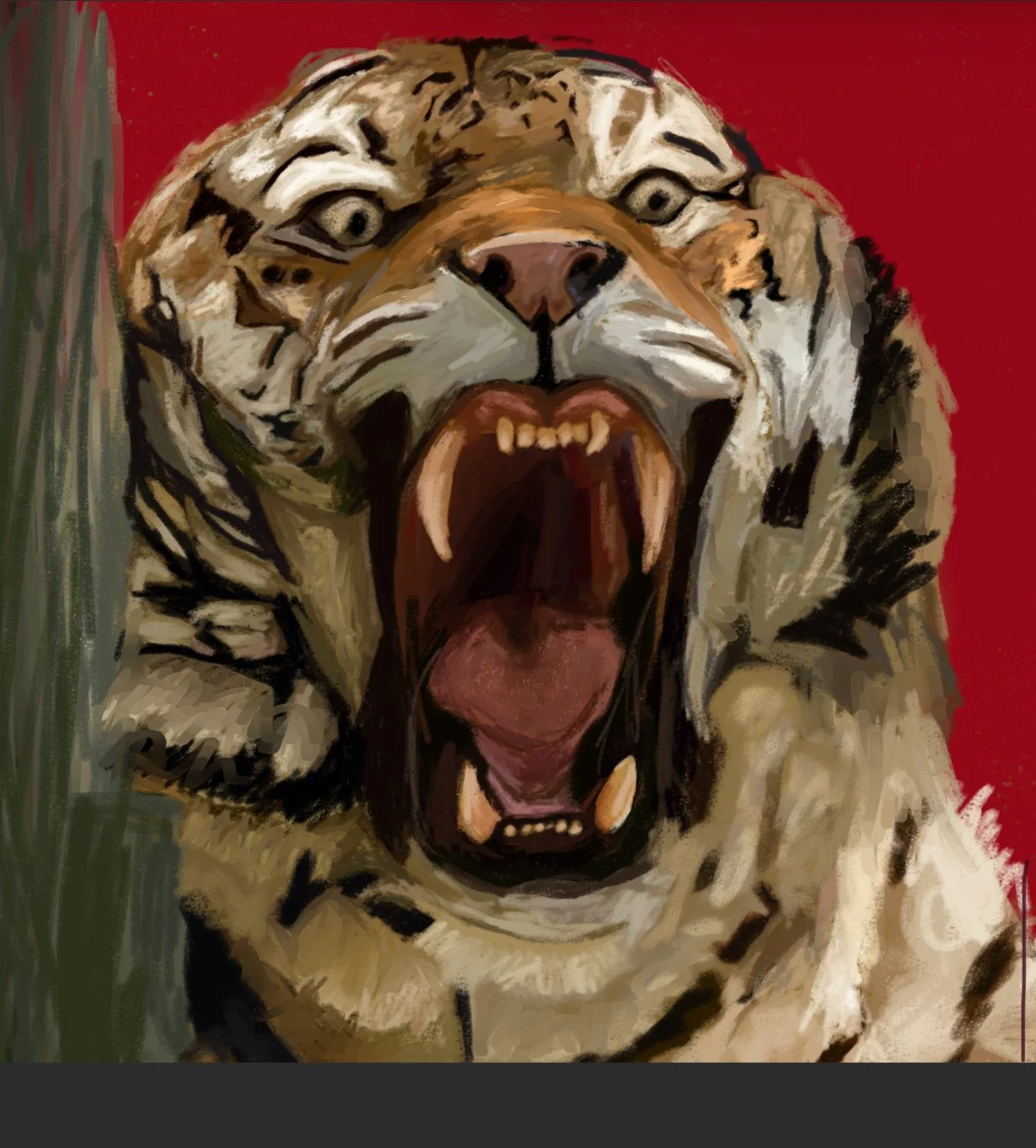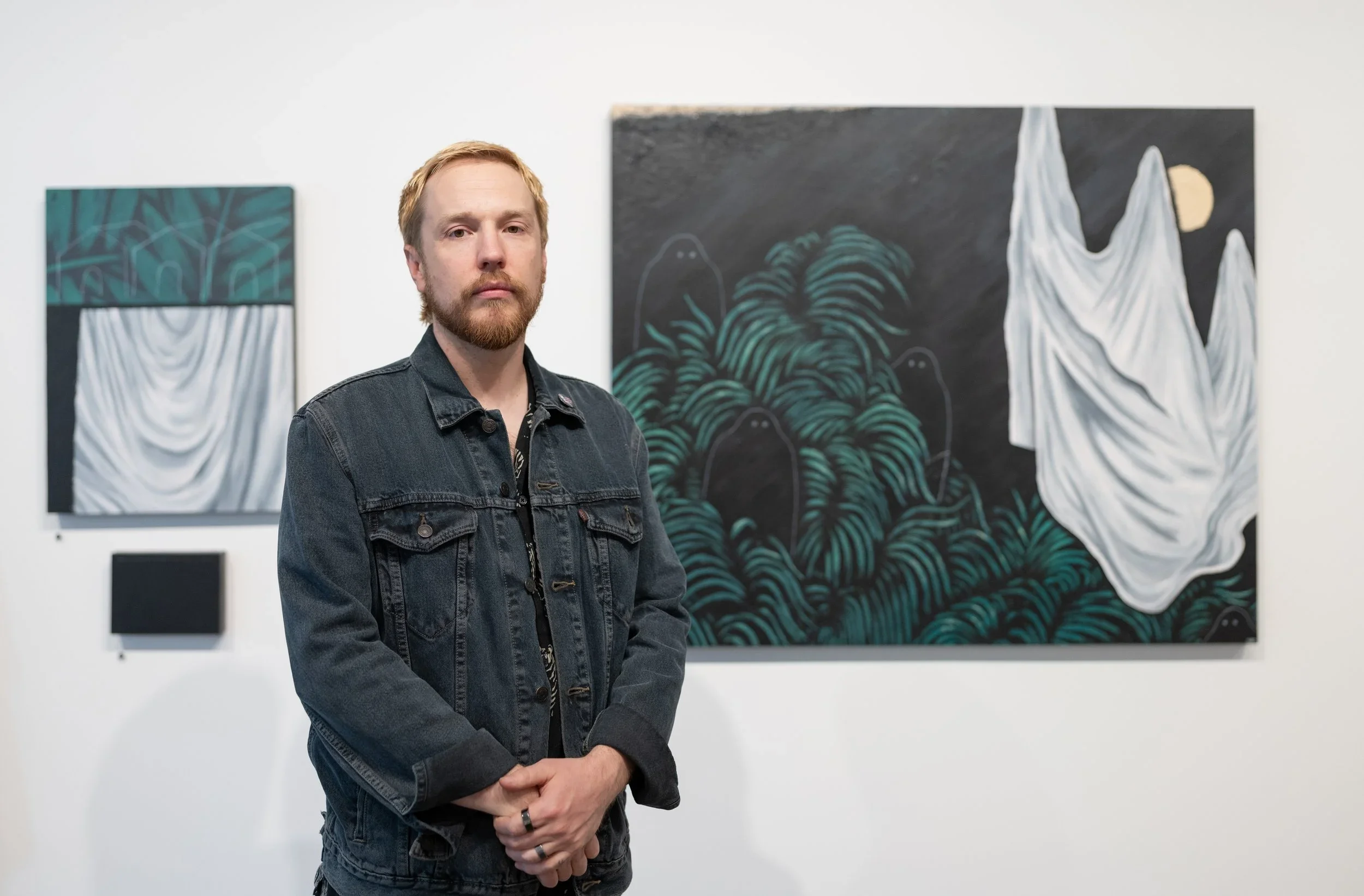10 Questions with Sofia Tsoi
© Sofia Tsoi
Sofia Tsoi is a self-taught artist based in Hong Kong; her work often explores the complexities of human emotions and art. From digital to oil paints, Sofia is constantly experimenting with all types of mediums to capture her artistic and conceptual vision, born from the people, environment and objects that she sees in her day-to-day life.
ARTIST STATEMENT
As an 'artist', I want to be able to create depth, portraying fresh perspective with each stroke of my paintbrush, something that is able to make someone else feel as I do. Art does not have to be of landscapes and pretty things to be good, and that is what I like most about it; it can reflect almost anything. It is when I can disappear into the sanctuary of my own creativity and imagination, there is no limit, no end to art, I have only barely skimmed the surface of what art is, and what it means to me. In a few years, I might be able to see thousands of hundreds more colours than now and feel a million more things than I do today. I hope that I will be able to immortalize it on the day that comes.
© Sofia Tsoi
INTERVIEW
Let's start from the basics. How did your journey as a self-taught artist begin?
I would say that I seriously began art when I was around 11-12. However, art has been in my life since then, but before that time, I merely considered it something I do to pass the time or to impress other people, not something that I considered one of my interests or hobbies. At 11, I entered a local small art competition for fun; all my friends were doing it, and it was summer break, so it wasn't like I had anything much better to do. Surprisingly, I won. I still remember vividly the amount of joy and pride that I felt, and I think this is when I actually started seeing art as something more significant and meaningful.
You work with many different mediums. How do you decide which one to use for a particular piece?
I usually start by getting a clear vision of what I want to do; I ask myself what I want to achieve with this piece and how I want to twist this idea into an artwork. Getting inspiration is also very important and a big part of my artistic process; after I have a general idea of what I want to create, I would then go look for images that relate to this idea, it could be of other artworks or concepts as well as colour palettes or writing, anything that I think fits well with the mood of the artwork. During this stage, I usually can already picture the composition of the artwork; from there, I consider which medium will best bring that vision to life-whether it's acrylics for bold texture and colours, digital art for flexibility and layering, or pencils for delicate detail, etc. The medium becomes a tool to express the mood and message I want to communicate.
© Sofia Tsoi
Can you describe how your environment and daily life inspire your creativity?
My environment and daily life are constant sources of inspiration for my creativity. It stems from both the objects and people that I encounter in my day-to-day life, but more often, it comes from the emotions and experiences I get from different interactions. Whether it's a fleeting moment of joy, frustration, curiosity, or even boredom, these feelings become the raw material I draw from when creating my pieces, I think my best works are the ones that are inspired by these things as it feels more intense and I have a better grasp of what it is I am trying to convey. Art is also a way for me to process and make sense of these experiences, it allows me to explore complex feelings and communicate ideas that might be difficult to express in my mind. I think this kind of connection to real life gives my art a sense of authenticity and depth that I strive to maintain in every piece.
What draws you to explore human emotions through your art?
I'm deeply fascinated by the complexity and universality of human emotions. To me, emotions are kind of like threads that connect us all, regardless of our background or experience. They are universal, and I find that exploring them through art allows me to tap into something more profoundly human and relatable to me. What draws me most is the way that art is able to communicate feelings visually that often go unspoken or are difficult to express in words. Art also gives me a way to process my own feelings and make sense of the complexities within me. Sometimes emotions are overwhelming or confusing, and translating them into visual form helps me to understand and accept them further.
© Sofia Tsoi
What role does experimentation play in your artistic process?
Experimentation plays a fundamental role in my artistic process as both a tool for discovery and growth, especially as a self-taught artist. I approach each piece as an opportunity to question, test, and explore new ideas, techniques, and materials rather than simply aiming for a predetermined outcome. This mindset allows me to embrace uncertainty, which often leads to more creative breakthroughs and allows me to hone or discover new skills that can improve my talent further. By experimenting, I also push myself out of my comfort zones and habitual ways of working, whether that meanstrying new and unconventional mediums or colour palettes or combining different styles or approaches; these explorations open up fresh possibilities and help me to further develop a unique artistic voice. Ultimately, experimentation is not just about the final piece but about the ongoing process of exploration and self-discovery. I think it helps me evolve my art styles and allows me to continuously refine my skills and artistic vision while maintaining the sense of freedom and joy that I feel in making art.
How do you approach capturing depth and fresh perspectives in your work?
First, I use different colours and values to capture emotional depth in my work. As we know, warmer colours ( such as shades of reds, oranges, yellows) tend to advance more toward the viewer, creating a sense of closeness, while cooler colors ( like blues, greens and purples) can kind of recede from the audience, which can effectively help me capture themes of distance or sadness. Placing these warm and cool tones allows me to create the kind of atmosphere and emotions that I wanted to capture in my work and adds further depth and dramatics to the meaning behind my works. Furthermore, symbolism and metaphors are also factors that can help me add more layered meaning and fresh perspectives. By incorporating personal symbols, cultural references, or visual metaphors, I can better communicate complex emotions and ideas that I hope are able to resonate deeply with the audience. I also think that the use ofsymbolism in my work helps create multiple interpretations, which makes my work more interactive and personal. To capture fresh perspectives, I prioritize vulnerability and authenticity in my artistic process, rather than striving for technical perfection, I try my best to embrace imperfection and allow my unique emotional experiences to guide the creation of the artwork.
© Sofia Tsoi
You mentioned that art doesn't have to be about "pretty things" to be powerful. Can you elaborate on that idea?
Art doesn't have to be about "pretty things" to be powerful because its true strength lies in its ability to evoke emotion, provoke thought, and communicate experiences, no matter how uncomfortable or challenging those may be, its powers lie in being able to universally and visually discuss concepts and opinions, transcending borders of language, background, cultural and more. While of course, beauty in art can certainly and absolutely be powerful and have the ability to captivate and inspire, art that confronts difficult subjects, raw emotions, or unsettling realities can also resonate and leave a lasting impact. For me, powerful art is about more about honesty and authenticity rather than visual aesthetics. It's about expressing truths that might not always be easy to look at, whether that's pain, fear, anger, or vulnerability. They carry a profound emotional weight that allows them to connect with viewers on a human level. In my perspective, art's power comes from its ability to communicate beyond surface appearances. Whether it's a striking image, a raw emotion, or a provocative idea, art that is honest and meaningful can move people deeply and even inspire change, that's why I believe art doesn't need to be "pretty" to be impactful, it just needs to be real.
What does it feel like when you "disappear into the sanctuary" of your creativity?
Disappearing into the sanctuary of my creativity feels like stepping into a completely new world where time slows down and all the outside noise melts away; it's a space where all my thoughts and emotions rise up to the surface and where I feel both completely free and profoundly connected-to my inner self, to the materials I'm working with, and to the ideas taking shape. The usual distractions and stresses that I feel in my daily life seem to momentarily dissolve, and I become fully present in the moment, enjoying the creative process of my work without overthinking or judgment. It's a kind of meditative state where ideas emerge naturally, and I think that this is a crucial reason why I love art as much as I do.
© Sofia Tsoi
How do you hope your art makes viewers think when they experience it?
When any viewer experiences my art, I truly hope it is able to spark a moment of reflection, a pause that invites them to look beyond the surface and connect with the emotions or thoughts that I have embedded within my works. I want my art to be able to encourage people to consider perspectives they might not have encountered before and provoke curiosity and empathy. I hope that viewers feel compelled to ask questions and explore their own feelings. Rather than offering easy answers, I want my art to open up space for dialogue and personal interpretation, allowing each person to find their ownmeaning ( which as mentioned before, I try to do this by using symbolism and personal references).
Looking ahead, what excites you most about how your art might evolve over time?
Looking ahead, I think what excites me most about how my art might evolve is the opportunity to deepen my exploration of emotions and experiences in new and unexpected ways. As I grow both personally and artistically, I'm eager to experiment with different forms, materials, and techniques that can expand how I express ideas and connect with viewers on a more profound level.
Artist’s Talk
Al-Tiba9 Interviews is a promotional platform for artists to articulate their vision and engage them with our diverse readership through a published art dialogue. The artists are interviewed by Mohamed Benhadj, the founder & curator of Al-Tiba9, to highlight their artistic careers and introduce them to the international contemporary art scene across our vast network of museums, galleries, art professionals, art dealers, collectors, and art lovers across the globe.




















